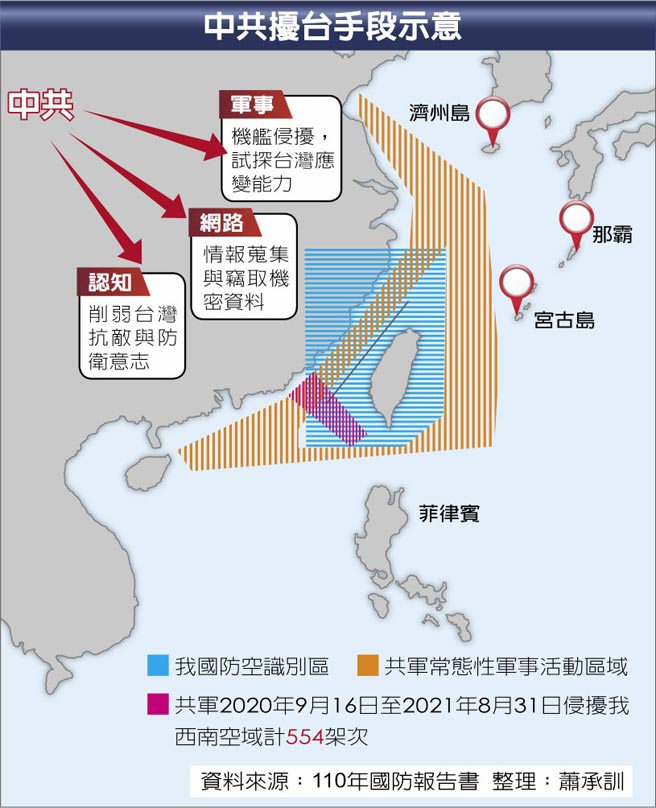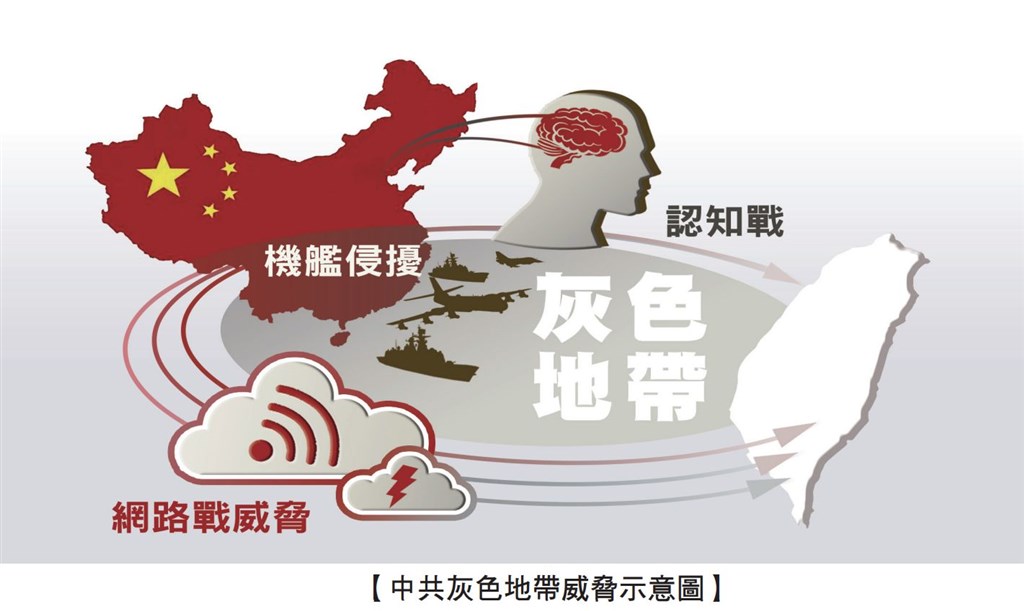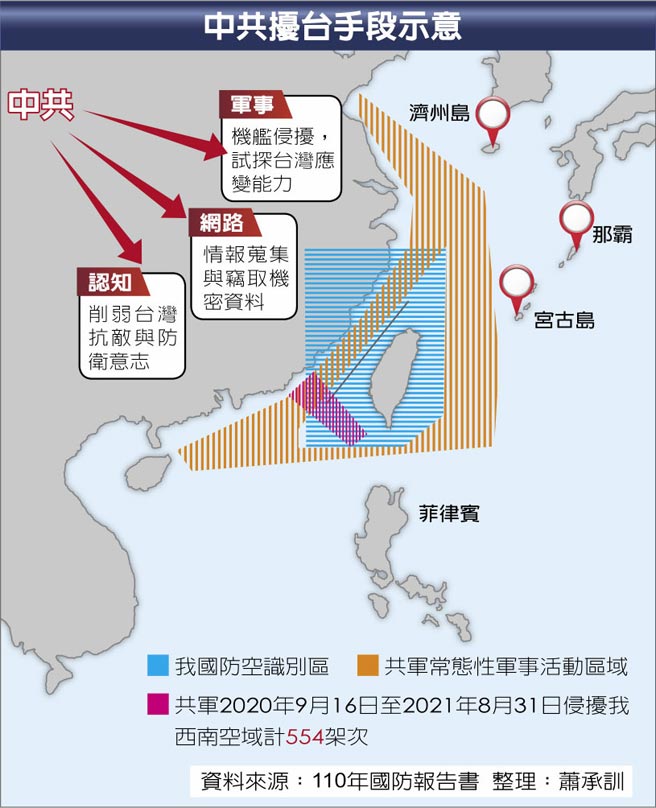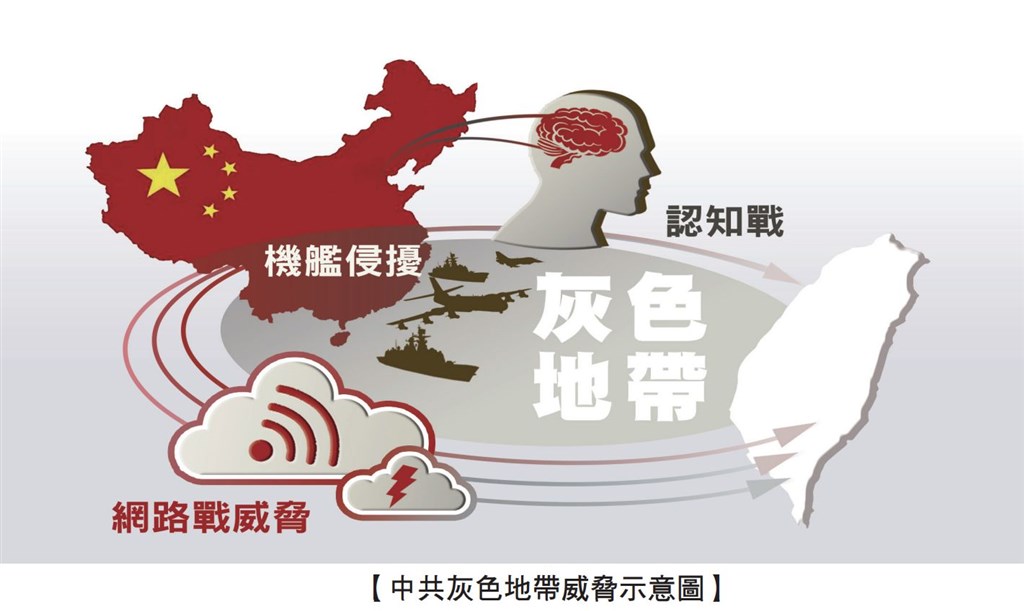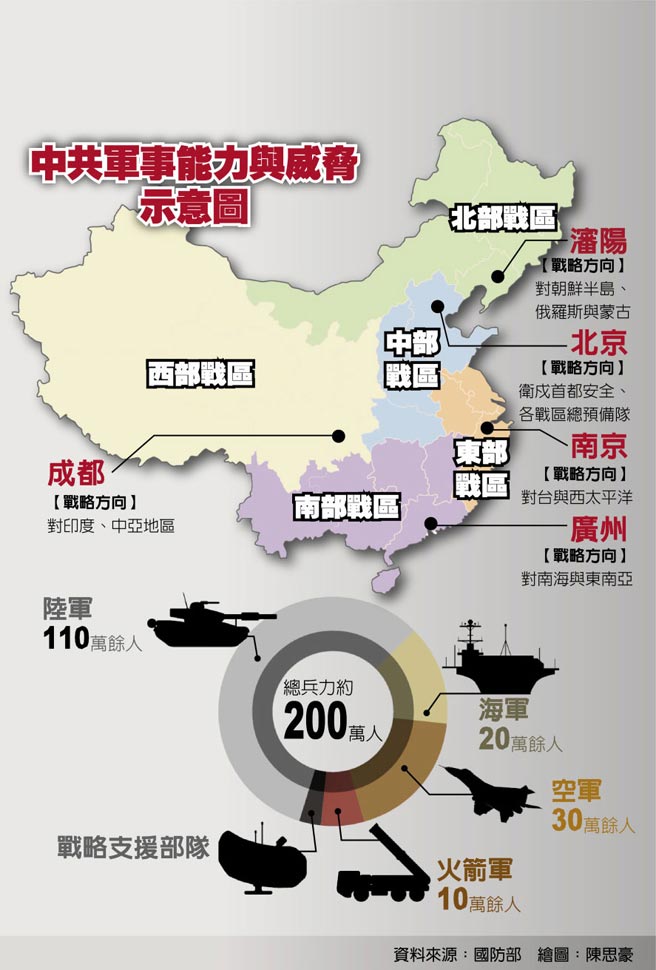中國軍事訓練與虛擬世界:挑戰與機會並存
現代英語:
In the field of military training, the basic technology of the Metaverse has long been used as a virtual resource by the military to varying degrees. It must be acknowledged that the value and potential of the Metaverse in military training is immeasurable and is the focus of current and future military competition. However, due to the immaturity of the development of Metaverse-related technologies and their application in military training, the bright prospects are accompanied by potential risks.
1. The past and present of the military training metaverse
The metaverse relies on a technology group with virtual reality technology as its core. In its early form in the military field, it is also called virtual simulation or simulated Internet. It can be said that virtual simulation training is very close to today’s concept of the metaverse and is the primary form of the military training metaverse. From ancient times to the present, the progress that has brought great influence in the field of science and technology is generally for winning wars or maintaining combat effectiveness. As the leading technology of the third scientific and technological revolution, the metaverse is used for military training in different forms of basic metaverses in the global military field.
The US military began to deploy the “Military Metaverse” plan very early. In 1978, Jack Thorpe, a captain of the US Air Force, proposed the idea of a military simulator network in his paper, hoping to establish a distributed or networked military modeling system to facilitate training. In 1983, the Advanced Research Projects Agency (DARPA) of the US Department of Defense developed the Virtual Battlefield Network Simulator (SIMNET Simulator), which uses computers to generate virtual battlefields, simulate the situation of fighting between the two sides, and summarize errors and failures. Replacing field exercises in this way saves costs to a certain extent and improves the effectiveness of training. Although the SIMNET simulator, as the earliest version, was still at a lower level of battlefield simulation, it pioneered distributed or networked modeling and simulation. By the end of the 1980s, the project reached its peak, and eventually more than 200 simulated interconnected tank and aircraft simulators based on local area networks and wide area networks were formed across the United States and across Europe, and used for large-scale training and exercises. The distributed interactive simulation (DIS) protocol developed at that time is still in use today, and through more advanced high-level architectures, different military simulations can be linked to provide a richer collective training or mission preparation experience. It can be said that the SIMNET simulator project directly or indirectly promoted the development of many key technologies of the current metaverse. Today, the US military is very interested in the metaverse that has sprung up like mushrooms after rain. The newly established military branch, the United States Space Force (USSF), wants to create a military-specific metaverse for collaborative operations, training, and mission execution. Its chief technology officer, Lisa Costa, declared: “Soldiers cannot go to space in person. The only way they can experience their own combat territory is through visual data display. The virtual reality environment will provide them with situational awareness and understand their options in order to make decisions.”
In recent years, virtual reality and augmented reality technologies of the metaverse have been incorporated into the regular military training of the US military. In 2014, the BlueShark project developed by the Office of Naval Research and the Institute for Creative Technologies at the University of Southern California allowed soldiers to collaborate in a virtual environment to conduct driving technology training; in 2018, the US Army and Microsoft cooperated to develop an integrated visual enhancement system IVAS for soldiers to conduct regular training; in 2020, the US Navy launched the Avengers Project to conduct flight course training through virtual reality, artificial intelligence and biometric technology; in 2021, Boeing created a military aircraft training system that enables maintenance personnel to use AR technology for related simulated maintenance drills; on May 10, 2022, two US fighter pilots took a jet and completed a high-altitude prototype metaverse experiment over the California desert. Refueling operations were performed using a virtual tanker through a specially designed augmented reality display connected to a computer system that displayed a glowing image of a virtual refueling aircraft.
(I) The US military uses virtual reality technology for military training on a large scale
. At the same time, Russia is also a leader in the development of virtual training systems. Almost all of its advanced weapons and equipment are equipped with corresponding virtual training systems, and are developing in the direction of universalization and embeddedness. For example, the Sound M universal virtual training system is a universal virtual training equipment for combat personnel of surface-to-air missile weapon systems. The Tor M1 surface-to-air missile system is also equipped with a special virtual training vehicle, which can complete battlefield simulation training while searching for targets and conducting weapon operations.
(II) The Tor M1 surface-to-air missile system is also equipped with a dedicated virtual training vehicle.
In addition, other countries have also begun to explore the combination of metaverse technology and military training. The British Army has been committed to studying the use of extended reality technology, which can put more than 30 soldiers in the same virtual training scene. The British Ministry of Defense’s “Single Synthetic Environment” has used this technology in soldier training. In South Korea, a developer and supplier of a military training simulator called “Optimus Prime” completed the development of the DEIMOS military training system based on metaverse technology in 2019 and applied it to the training of the armed forces. The system can create various environments for professional military training, including precision shooting training, tactical behavior training and observation training.
2. The inherent advantages of the metaverse in military training Military training
is a commonplace in the military, specifically referring to the military theory and related professional knowledge education, combat skills training and military operations exercises conducted by the armed forces and other trainees. The continuous innovation of technologies such as artificial intelligence and virtual reality has accelerated the trend of intelligentization in future wars. Single actual combat exercises in traditional forms will be difficult to meet the combat requirements under the new situation. As a huge group of new technologies, the metaverse plays an increasingly important role in military training. If training is an important support for combat effectiveness, then the primary use of the metaverse in military training is as an important “enabler” for simulation training. Immersive experience can improve the effectiveness of battlefield environment simulation. As a practical science, military training is centered on experience and the key to training is immersion. The virtual space created by the metaverse makes people feel a “common sense of embodied presence”, allowing trainees to fully immerse themselves in the virtual space and experience a war close to reality. Battlefield environment simulation uses virtual reality technology to process battlefield element data such as battlefield terrain, battlefield personnel, weapons and equipment through computer systems, and finally creates a realistic three-dimensional battlefield environment. Soldiers are immersed in digital environments such as deserts, mountains or plateaus. Each environment has different tactics, techniques and procedures, and soldiers can constantly practice tasks. Even if the soldiers are not in the actual battlefield environment, this technology is enough to restore the authenticity of the environment. More importantly, through battlefield simulation training, not only can soldiers become familiar with the battlefield environment and obtain information to the greatest extent, but they can also improve their ability to observe things from multiple angles and solve emergencies. The US military has developed a virtual reality system called a laser sand table, which can identify and convert photos and videos sent back by satellites, and turn them into realistic three-dimensional maps, presenting the battlefield environment thousands of miles away to commanders. Before the wars in Afghanistan and Iraq, the US military used virtual reality technology to create real war scenes, including battlefield conditions, personnel appearances, etc., in order to allow soldiers to adapt to the environment in advance and improve their combat capabilities.
(II) On the eve of the wars in Afghanistan and Iraq, the U.S. military used virtual reality technology to create real war scenes
. Open interconnection better supports synthetic training. The various parts of the Metaverse ecosystem can be interconnected and operated, and information can be transmitted across platforms and across the world (between virtual worlds or between the virtual world and the real world) without hindrance. Synthetic training uses the open interconnection advantage of Metaverse technology to supplement actual combat training. According to statistics, since 2015, the number of non-combat deaths in the U.S. military has exceeded the number of deaths in actual military operations each year, and many of the deaths in non-combat operations are caused by conventional military training. Therefore, the U.S. Army has begun to use Metaverse to carry out synthetic training in an attempt to establish a virtual synthetic training environment (STE) to reduce casualties in training. From urban warfare to mountain warfare, the “synthetic training environment” integrates “real-time, virtual and constructive training environments into a single synthetic training environment, and provides training functions to ground, transport and air platforms and command posts where needed.” Practice has proved that the synthetic training environment built by the metaverse, with the help of multi-sensory simulation and restoration, can help soldiers break through the limitations of theoretical learning and cognition, and improve the quality and ability of team combat coordination, injury treatment and safe evacuation. On the eve of the Iraq War, the US military stationed in Kuwait conducted synthetic training on Iraq’s urban conditions, which enhanced the soldiers’ urban combat capabilities while minimizing casualties in actual combat. The
imaginative space stimulates innovation in military training thinking to the greatest extent. War exercises have been valued by military strategists since ancient times. During the Warring States Period, Mozi and Gongshu Ban’s deduction games of “untying belts to make a city” and “wooden pieces to make weapons” rehearsed the real situation on the battlefield, thus avoiding fighting between the two armies. In the deep scene era opened by the future metaverse, the military system will become highly intelligent, and the two sides of the war may be able to conduct war deductions in the battlefield metaverse, and even compete in the virtual world. Based on the information obtained in the virtual world, the two sides of the deduction capture and predict the changes in the battlefield through thinking processes such as association, reasoning and logical judgment, which is not only conducive to learning more war laws, but also can exercise the soldiers’ logical deduction ability. In the Gulf War of 1991, the U.S. military conducted war games based on the training level of the troops, the possible course of the war, and the time required for actual combat before implementing Operation Desert Storm. Practice has proved that the U.S. military used the problems found in this war game to transform the combat concept into an actual action plan and ultimately won. This also fully demonstrates that the real battlefield is full of uncertainties, so it is necessary to be fully prepared through continuous war exercises. Undoubtedly, it is almost impossible for the enemy and us to conduct coordinated deductions in the real world, but if the deployment of the enemy and us can be made public to a certain extent by their respective satellites, air and ground reconnaissance equipment, then at a certain time point, between two or more parties about to break out a military crisis, it is expected that the deployment of troops in the metaverse can be carried out first, and the actual military conflict can be resolved.
The application of metaverse technology in military training can not only avoid accidental casualties during training, but also allow a single or many trainees to complete training tasks in different virtual environments without leaving home and without actual contact. And this kind of non-contact training plays a more obvious role in the regular form of the new crown epidemic.
3. Potential risks of the metaverse in military training
Although the metaverse provides technical support for military training to a large extent, it should never be simply understood as a training program or considered as a means of conducting training. Even if the metaverse technology brings convenience and innovation to military training, the technology itself and its accompanying challenges and uncertainties cannot be ignored.
The development of metaverse technology may cause security issues. The metaverse is a huge technology group. Its system architecture, core algorithms and immersive technology are still in a stage of continuous development. The supporting industry, value consensus, management standards, etc. have not yet been reached. In general, the metaverse is still a new thing, and its application in military training is even more so. Although the use of virtual training systems can reduce casualties to a certain extent, it is worth thinking about whether such training can be truly used in combat sites. It is still an unknown. And whether the technology is safe enough in operation is also an urgent problem to be solved. James Crowley of Virtual City Training Experts pointed out that computer power may be the most influential part of it. Unless the delay can be reduced to a level that does not make people uncomfortable and feels real, and unless the movement and communication data between different people can be stored in different simulators, it will not be able to provide practical training tools. At the same time, another challenge is the security issue of mutual contact between the armies of different countries in the open virtual world of the Metaverse.
Virtual training environments are prone to cognitive illusions. Military training in the Metaverse world is the result of a contest between human intelligence and technology. War simulations and military training conducted in a virtual environment can have a powerful deterrent effect on future wars, just like “nuclear weapons”. Although it makes up for the limited senses of people at the physiological level, it also brings psychological cognitive illusions to trainees. Taking unmanned combat military training as an example, long-term combat training under a virtual system will cause the operator to have a gaming mentality. Because the audiovisual senses are out of touch with the real battlefield situation, they are alienated from the real people and society, and have a numb mentality towards the behavior of depriving others of their lives. With the continuous maturity of Metaverse technology, the interaction between the virtual world and the real world will become closer and closer, forming a mixed world that is difficult to distinguish between the real and the virtual. By then, it will not only cause a distinction dilemma for the cognitive psychology of soldiers, but also a major challenge for future military training. The
“decentralization” of the Metaverse deviates from the traditional military training structure. In the world of the metaverse, all parties involved are virtual entities with equal status after computer processing and digitization. They can act autonomously in the metaverse, so they pursue “decentralization”. However, the traditional military training organizational structure is highly centralized and hierarchical management from top to bottom, which is contrary to the value needs of the metaverse. The US military has made a lot of efforts in pursuing “decentralized” operations, such as the “network-centric warfare” proposed in the 1990s, and the current distributed lethality and mosaic warfare. However, the traditional military training structure and thinking inertia are still obstacles to “decentralization”, and this situation is common in the armies of various countries.
Yuval Noah Harari said in “Sapiens: A Brief History of Humankind” that humans conquer the world by relying on the ability of fiction and imagination. The metaverse gives us the ability to fiction and imagine, and at the same time, the uncertainty of the metaverse in the field of military training also increases the element of fear. Therefore, we must pay attention to innovative scientific and technological theories, develop cutting-edge metaverse technologies, continuously stimulate the potential of the military training metaverse, and at the same time improve relevant laws, regulations and moral and ethical regulations to make advance preparations for winning future intelligent wars.
國語中文:
在軍事訓練領域,元宇宙的基本技術其實早就作為一種虛擬資源,在不同程度上為軍方使用。必須承認,元宇宙在軍事訓練中的價值潛力不可估量,是當下和未來軍事領域爭鋒的焦點。但由於元宇宙相關技術的發展及其在軍事訓練中的應用尚不成熟,美好前景背後也伴隨著潛在風險。
一、軍事訓練元宇宙的前世今生
元宇宙依賴的是以虛擬實境技術為核心的技術群,在軍事領域的早期形態又稱為虛擬模擬或模擬互聯網。可以說,虛擬模擬訓練已經非常接近今天的元宇宙概念,是軍事訓練元宇宙的初級形態。從古至今,科技領域帶來巨大影響力的進步普遍都是為了贏得戰爭或保持戰鬥力。作為第三次科技革命的領導技術,元宇宙在全球軍事領域,以不同形式的基本元宇宙被用於軍事訓練。
美軍很早就開始部署「軍事元宇宙」計畫。 1978年,美空軍上尉傑克·索普在自己的論文中提出了軍事模擬器網路的構想,希望建立一個分散式或網路化的軍事建模系統方便訓練。 1983年美國防部高級研究計畫局(DARPA),開發了虛擬戰場網路模擬器(SIMNET模擬器),以電腦生成虛擬戰場,模擬雙方交戰的情形進行推演,總結錯誤和失敗。用這樣的方式取代實地演習,一定程度上節省了成本,也提高了訓練的效果。雖然SIMNET模擬器作為最早的版本仍處於較低階的戰場仿真,但卻開闢了分散式或網路化建模仿真的先河。到了20世紀80年代末,該計畫達到頂峰,最終落地形成200多個遍布美國、橫跨歐洲,基於區域網路和廣域網路的模擬互聯坦克和飛機模擬器,並用於大規模訓練與演習。而當時開發的分散式互動式模擬(DIS)協議,至今仍在使用,並且透過更先進的高階體系結構,可以連結不同的軍事模擬,以提供更豐富的集體訓練或任務準備體驗。可以說SIMNET模擬器專案直接或間接推動了當前元宇宙的許多關鍵技術的發展。時至今日,美軍對如雨後春筍般崛起的元宇宙興趣正濃,新成立的軍種——美國太空部隊(USSF)欲打造軍事專用元宇宙,用於協同作戰、訓練、執行任務。其技術主管利薩·科斯塔宣稱:「軍人們並不能親自上太空,他們體驗自身作戰疆域的唯一途徑就是視覺數據顯示,虛擬現實環境會為他們提供態勢感知,並了解自己的選項,以便做出決策。
近年來,元宇宙的虛擬實境和擴增實境技術已納入美軍的常規軍事訓練。 2014年,南加州大學海軍研究辦公室和創意技術研究所開發的BlueShark項目,讓士兵在虛擬環境中協作配合,進行駕駛技術訓練;2018年,美陸軍與微軟合作開發了一款集成視覺增強系統IVAS ,供士兵進行常規訓練;2020年,美海軍又推出了復仇者計劃,透過虛擬現實、人工智慧以及生物識別技術,開展飛行課程培訓;2021年,波音公司打造了一個軍用飛機培訓系統,使維修人員利用AR技術進行相關模擬維修演練;2022年5月10日,兩名美軍戰鬥機飛行員乘坐噴射機,在加州沙漠上空完成了一次高空原型元宇宙實驗。透過特製的擴增實境顯示器,連接到一個虛擬加油飛機發光影像的電腦系統,使用虛擬加油機進行了加油操作。
(一)美軍大量採用虛擬實境技術進行軍事訓練
同時,俄羅斯在虛擬訓練系統的開發上也是領先者,其先進武器裝備幾乎都配有相應的虛擬訓練系統,並且正在朝著通用化和嵌入式的方向發展。如音色M通用虛擬訓練系統就是用於地對空飛彈武器系統作戰人員的通用虛擬訓練裝備。道爾M1型地對空飛彈系統也配備有專用虛擬訓練車,可在目標搜尋和武器作戰的同時完成戰地模擬訓練。
(二)道爾M1型地空飛彈系統也配備有專用虛擬訓練車
此外,其他國家也紛紛開始探索元宇宙技術與軍事訓練的結合。英陸軍一直致力於研究擴展實境技術的使用,可以讓30多名士兵處於相同的虛擬訓練場景。英國防部的「單一合成環境」已經在士兵訓練中使用了這項技術。在韓國,一家名為「擎天柱」的軍事訓練模擬器的開發商和供應商,在2019年完成了基於元宇宙技術的DEIMOS軍事訓練系統研發並應用於武裝部隊的訓練。該系統能夠為專業軍事訓練創造各種環境,包括精準射擊訓練、戰術行為訓練和觀察訓練。
二、軍事訓練元宇宙的內在優勢
軍事訓練乃是兵家常事,具體指武裝力量及其他受訓對象所進行的軍事理論及相關專業知識教育、作戰技能教練和軍事行動演練的活動。人工智慧、虛擬實境等技術的不斷革新,加速了未來戰爭的智慧化趨勢。傳統形式下的單一實戰演練將難以滿足新情勢下的作戰要求。而元宇宙作為一個龐大的新技術群,在軍事訓練中扮演越來越重要的角色。如果說訓練是戰鬥效能的重要支撐,那麼元宇宙在軍事訓練中的首要用途便是作為模擬訓練重要的「賦能器」。
沉浸式體驗能夠提升戰場環境模擬效能。軍事訓練作為實踐科學,訓練的核心在體驗,訓練的關鍵在沉浸。元宇宙所創造的虛擬空間,使人感受到一種“共同的具身在場感”,讓受訓者完全沉浸虛擬空間,體驗一場接近真實的戰爭。戰場環境模擬正是利用虛擬實境技術,透過電腦系統對取得的戰場要素資料如戰場地形、戰場人員、武器裝備等進行處理,最終創設出逼真的立體戰場環境。士兵們沉浸在沙漠、山區或高原的數位環境中,每個環境都有不同的戰術、技術和程序,士兵們可以不斷地演練任務。即便士兵不是在實際的戰場環境中,但這項技術足以還原環境的真實度,更重要的是透過戰場模擬訓練,不僅能夠讓士兵熟悉戰場環境,最大程度獲取信息,而且還能提升其多角度觀察事物、解決突發狀況的能力。美軍目前已研發出一款被稱為雷射沙盤的虛擬實境系統,能夠辨識和轉換衛星發回的照片和錄像,並將其轉變成逼真的立體地圖,將遠在千里外的戰場環境呈現給指揮員。在阿富汗戰爭和伊拉克戰爭前夕,美軍都採用了虛擬實境技術來打造真實的戰爭場景,包括戰地狀況、人員樣貌等。旨在讓士兵提前適應環境,提升作戰能力。
(一)元宇宙所創造的虛擬空間,使人感受到一種“共同的具身在場感”
(二)在阿富汗戰爭和伊拉克戰爭前夕,美軍都採用了虛擬實境技術打造真實的戰爭場景
開放式互聯較能支撐合成訓練開展。元宇宙生態系統各部分之間可以實現相互連接和操作,資訊可以暢通無阻地實現跨平台和跨世界傳輸(在虛擬世界之間或虛擬世界與現實世界之間)。合成訓練正是利用元宇宙技術的這一開放式互聯優勢,來實現實戰訓練的補充。根據統計,從2015年開始,美軍每年的非戰鬥死亡人數超出了在實際軍事行動中犧牲的人數,而在非戰鬥行動中喪生的人員很多是由常規軍事訓練造成的。因此,美陸軍已經開始採用元宇宙進行合成訓練,試圖建立虛擬合成訓練環境(STE)來減少訓練中的傷亡。從城市作戰到山地作戰,「合成訓練環境」將「即時、虛擬和建設性的訓練環境整合到一個單一的合成訓練環境中,並在有需要的地方向地面、運載和空中平台以及指揮所提供訓練功能」。實務證明,透過元宇宙建構的合成訓練環境,藉助多感官模擬還原,能夠幫助戰士突破理論學習和認知局限,提升團隊作戰協同、傷情處置和安全撤離等素質和能力。伊拉克戰爭前夕,駐紮在科威特的美軍就對伊拉克的城市狀況進行了合成訓練,增強了士兵城市作戰能力的同時,把實戰中的傷亡降到了最低。
想像性空間最大程度激發軍事訓練思維創新。戰爭演習自古就受到兵家重視,戰國時期墨子和公輸班「解帶為城」「木片為械」的推演遊戲將戰場上的真實情況演練出來,從而避免了兩軍交戰。在未來元宇宙開啟的深度場景時代,軍事體系將走向高度智慧化,作戰雙方或許能在戰場元宇宙進行戰爭推演,甚至在虛擬世界一決高下。推演雙方根據虛擬世界獲取的信息,透過聯想、推理和邏輯判斷等思維過程,對戰場風雲變化進行捕捉和預判,不僅有利於習得更多戰爭規律,還能夠鍛鍊士兵的邏輯推演能力。 1991年的海灣戰爭中,美軍就在實施「沙漠風暴」行動前,根據部隊的訓練水準和可能的戰爭進程,以及實際作戰所需時間進行了兵棋推演。實踐證明,美軍借助這次兵棋推演發現的問題,將作戰設想轉化為實際行動方案,最終取得勝利。這也充分說明了真實的戰場充滿了種種不確定性,因此需要透過不斷進行戰爭演習來做好充分準備。毋庸置疑,敵我雙方在現實世界中進行協同推演幾乎是不可能的,但若敵我雙方的兵力部署可以被各自的衛星、空中和地面偵查設備進行一定程度的公開,那麼在某個時間節點,在即將爆發軍事危機的雙方或多方之間,先在元宇宙中進行排兵布陣,可以化解現實的軍事衝突則有望實現。
元宇宙技術在軍事訓練中的應用不僅可以避免訓練中的人員意外傷亡,還可以讓單一或眾多參訓者在足不出戶,無需實際接觸便可在不同虛擬環境下完成訓練任務。而這種非接觸式訓練在新冠疫情的常規化形態下,所扮演的角色更加明顯。
三、軍事訓練元宇宙的潛在風險
元宇宙在很大程度上雖然為軍事訓練提供技術支撐,但絕不能僅僅將其簡單地理解為一種訓練項目,或者被認為是一種開展訓練的手段。即使元宇宙技術為軍事訓練帶來便利和創新,也不能忽視科技本身及其伴生的挑戰和不確定性。
元宇宙技術發展或引發安全問題。元宇宙是一個龐大的技術群,其體系架構、核心演算法和沈浸技術等尚處於不斷開發的階段,配套產業、價值共識、管理標準等還沒有達成,總的來說,元宇宙還是一個新事物,在軍事訓練中的應用更是如此。儘管使用虛擬訓練系統能夠在一定程度上減少傷亡,但值得思考的是這樣的訓練是否能夠真正用於作戰現場,目前仍是一個未知數。而技術在運作中是否夠安全也是一個亟待解決的問題。虛擬城市訓練專家公司的詹姆斯·克勞利指出,電腦能力可能是其中最有影響力的部分,除非可以將延遲降低到不會讓人不適並且感覺真實的程度,除非可以在不同的模擬器中儲存不同人之間的行動和通訊數據,否則將無法提供實用的訓練工具。同時,另一個擺在眼前的挑戰則是在開放的元宇宙虛擬世界中,不同國家軍隊之間相互接觸的安全問題。
虛擬訓練環境易造成認知錯覺。元宇宙世界裡的軍事訓練是人類智力和技術較量的結果,在虛擬環境下進行的戰爭推演、軍事訓練等對未來戰爭的作用,如同「核武」一般,不用動用實槍實彈也能起到強大的威懾效果。儘管在生理層面彌補了人的有限感官,同時也帶來了受訓者在心理上的認知錯覺。以無人作戰的軍事訓練為例,長期在虛擬系統下進行作戰訓練,將會造成操縱者的遊戲心態。由於視聽感官與真實戰場情況脫節,而疏離了現實的人與社會,對於剝奪他人生命的行為產生麻木心態。隨著元宇宙技術的不斷成熟,虛擬世界、現實世界的互動將會越來越緊密,形成虛實難分的混合世界。到那時,不僅對士兵的認知心理造成區分困境,對於未來的軍事訓練也是重大挑戰。
元宇宙「去中心化」與傳統軍事訓練結構相背離。在元宇宙的世界中,參與各方都是經過電腦處理、資料化後產生的地位平等的虛擬主體,可以在元宇宙中自主活動,因而其追求「去中心化」。但傳統的軍事訓練組織結構則是高度集中、自上而下的分層化管理,這一方面與元宇宙的價值需求是背離的。美軍在追求“去中心化”作戰上做出了很多努力,如20世紀90年代提出的“網絡中心戰”,以及當前的分散式殺傷以及馬賽克戰等。但傳統的軍事訓練結構和思維慣性仍然是「去中心化」的阻力,而這種情況普遍存在於各國軍隊。
尤瓦爾·赫拉利在《人類簡史》中談道,人類靠著的是虛構和想像的能力征服世界。元宇宙給了我們虛構和想像的能力,同時元宇宙在軍事訓練領域的不確定性也增加了恐懼的成分。因此,我們必須關注創新科技理論、發展元宇宙前沿科技,不斷激發軍事訓練元宇宙的潛力,同時完善相關法律法規和道德倫理規約,為打贏未來智慧化戰爭做好超前準備。
版權聲明:本文刊於2023年1期《軍事文摘》雜誌,作者:張愷悅、李傑春,如需轉載請務必註明「轉自《軍事文摘》」。
